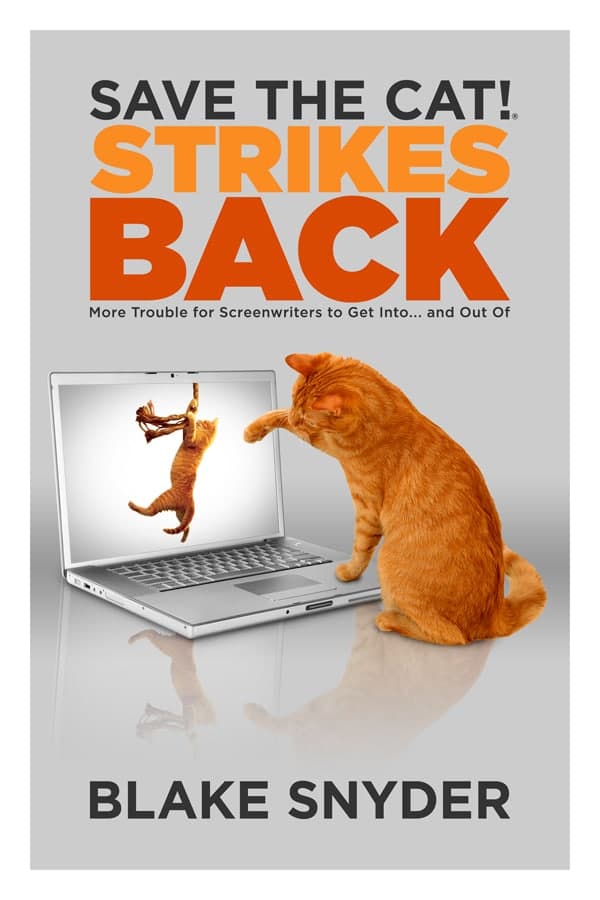 Save the Cat!® Strikes Back was published in 2009. A follow-up to Blake Snyder’s first book, Strikes Back promises “more trouble for writers to get into… and out of.” When I hold consultations with writers about their scripts, beat sheets, or loglines, I find myself continually falling back on the lessons in this book—and writers who have not yet read it are excited to implement its ideas and techniques.
Save the Cat!® Strikes Back was published in 2009. A follow-up to Blake Snyder’s first book, Strikes Back promises “more trouble for writers to get into… and out of.” When I hold consultations with writers about their scripts, beat sheets, or loglines, I find myself continually falling back on the lessons in this book—and writers who have not yet read it are excited to implement its ideas and techniques.
In the next few months, we’ll revisit some of the biggest takeaways from Save the Cat! Strikes Back and see how they can shape our own writing.
The Three Worlds
In each story, there are three different “worlds” that the hero must journey through in order to emerge as a transformed individual. Blake termed these the thesis, antithesis, and synthesis worlds. While they might sound technical, they’re actually pretty simple to understand and apply. In fact, examining your story through the lens of these three worlds can actually help to straighten your story’s spine when you’re faced with problems.
The thesis world is the world of Act One. The word thesis comes from the Greek word meaning “idea.” In this case, the thesis world represents the life of the hero as they know it. It’s their idea of how the world should function. Of course, this is where the hero’s life is full of problems, so we use the Catalyst beat to get the story rolling. As the hero deals with the Catalyst in the Debate beat, they need to sort through what has happened, changing life as they know it. And that’s what Act Two is about.
Act Two gives the hero the antithesis world. This is the opposite of the thesis world, a direct alternative to life as the hero knows it. We often like to think of this as the “upside-down” version of the thesis world. Here, the hero’s views and understanding of the world are challenged. They try to deal with the problem at hand, but they’re doing it the old way, the way they would have tackled it in the thesis world. That’s not going to work, not if they are to emerge as a changed individual.
This meaningful change needs to happens in the synthesis world of Act Three. Here, the hero takes their knowledge of life in Act One and combines it with the lessons learned and experience from Act Two. The result: a different way of thinking. Now, the hero can use their newly acquired skills, abilities, and understanding to conquer the problem once and for all in the Finale beat. They realize their approach in the thesis world won’t work because they’ve undergone a transformation! In this act, they can prove that the journey has changed them, and we as the audience realize that as well.
Take a look at some of your favorite films. See if you can identify the thesis, antithesis, and synthesis worlds and how the hero moves through them. Better yet, apply this to your own story and ask yourself if the hero is experiencing all three worlds. You’ll find that the hero’s arc is easier to craft this way.
Cory Milles
2 Comments
Leave a Reply Cancel reply
You must be logged in to post a comment.










This is an awesome explanation, Cory. If this were broken down into the 5-6 ACT structure I’d TV, would the anthesis would happen in ACT still, or likely come a bit later?
Good question! I think in TV, it would depend on the length of the episode. However, if we look at the episode as a whole, especially a pilot episode, we know that there needs to be a “whiff of change” by the end of the episode, something that indicates that the hero is going to go on a journey. There won’t be a full-blown transformation yet… that happens as the season progresses. For example, in episode 1 of The Mandalorian, at the end of the episode we see the hero go from rigid following of orders and his code to deviating from it slightly… not executing the bounty as he usually would. Of course, he still has room to grow over the course of the season and series, but he has that “whiff of change” then. So, in a TV pilot, look at it in terms of the “worlds”. As the hero makes the active choice to step into the “new” world, he or she “Breaks Into Two”. This is when we see the antithesis world. When they face a lowest point and deal with it (the lowest for the particular episode), they prepare to Break Ito Three and the beginnings of the synthesis world, signifying that the true season-long journey has begun.
In short, it’s important that the pacing maintains the momentum of the beats. For example, if the Break Into Two moment happens toward the end of the script, it’s often too late; it doesn’t give the audience the chance to get a glimpse of where the hero is headed. Having the hero step into the upside-down antithesis world as soon as possible is important, as it gives the audience a sense of the direction the hero is headed in.